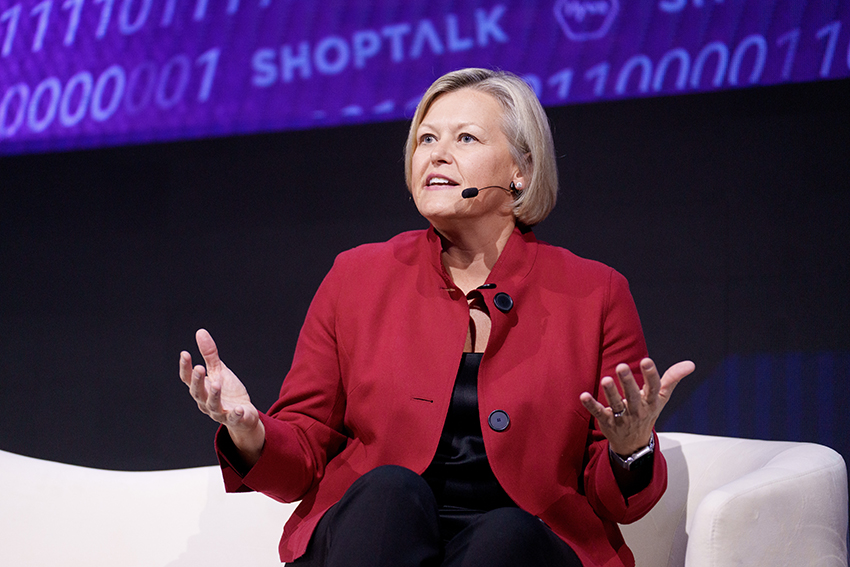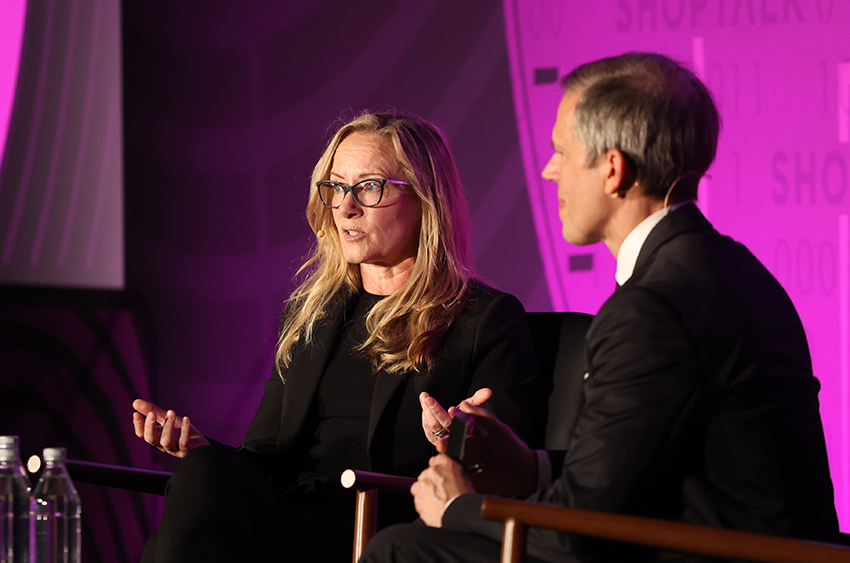While short-term rentals are seeing slowing demand, mid-term rentals are taking off (and fast). Mid-term rentals, also called medium-term rentals or MTRs, are thirty-day or longer stays, usually for traveling professionals or those who need temporary housing while relocating. These rentals give you more rent than a regular long-term rental, less turnover than short-term rentals, and can be successful in even the most average of markets. Where are MTRs heading next? We brought on Jeff Hurst, CEO of the leading MTR listing website Furnished Finder, to share the data he’s seeing.
Jeff believes MTRs are still years away from peaking in demand and supply. But maybe he’s a little biased as someone who works in the field. Even as an industry insider, Jeff brought some solid stats that show that MTR is far from falling off the investing map. He’s so bullish on this strategy that he believes MTR is now where Airbnb was in 2012. But what should you do to get in on MTR investing?
Jeff shares the best MTR markets and signs for whether or not your city could be a great place to try it, plus the surprising property type that works best for this strategy (MUCH more affordable than short-term rentals) and how landlords and investors can find tenants WITHOUT going through pricey booking platforms.
Dave:
Midterm rentals, which basically just means rental properties rented between 30 days and less than one year, has been one of the most popular investment strategies over the last few years. And for good reason because they’re a great way to generate cash flow. Even in this market, both so many new investors getting in on this game, the question becomes how much demand is there left? Did we miss out because we weren’t early adopters of this strategy? Is the midterm rental market gonna follow the short term rental market and see some struggles with oversaturation and peaking demand today? We’ll get into all of this as we break down the state of midterm rentals. Hey everyone, it’s Dave. Welcome to On the Market. I admit, although it’s been very popular, I have never invested in a midterm rental. I’ve stayed in one, but because we are obviously looking at this from an investment standpoint, I’m bringing in my friend Henry Washington to co-host today because he does have experience owning midterm rentals. Henry, what’s up man?
Henry:
What’s up Dave? How are you man? Glad to be here.
Dave:
Good, good to have you here. How many midterm rentals do you have?
Henry:
I’ve got four and we just started working on another duplex, so soon to be six.
Dave:
Nice man. Well thanks for backing me up here. I, so I wouldn’t just be out here asking uninformed stupid questions like usual.
Henry:
Oh, these are my favorite kind of episodes ’cause I get to take notes.
Dave:
All right, well what are we gonna talk about today then?
Henry:
Yeah, today our guest is Jeff Hurst. Jeff is the CEO of Furnish Finder, which means he’s got access to all of the data to help answer your questions and ours about the future of the midterm rental market.
Dave:
I am stoked because I have looked for midterm rental data everywhere. It does not exist pretty much anywhere public, but that’s why we have Jeff coming on because as the CEO of the biggest listing platform, he has data that we can now share with you. So let’s get into it. Jeff, welcome to the show. Thanks for being here.
Jeff:
My pleasure to be here.
Dave:
So let’s just start with a definition of midterm rentals. This might not be a term that everyone in our audience is familiar with. So what is a midterm rental?
Jeff:
I think the easiest definition is it’s a rental that’s more than 30 days. And so I kind of think of the bookends as on one end. You’ve got players like Airbnb and vrbo, uh, VRBO where I was president and worked for a long time. They do, uh, basically nightly and weekly rentals, but the average rental is less than seven days. It’s typically more leisure and you know, they’re pioneers in kind of this home sharing and rental economy. On the opposite end, you’ve got long term, typically a year or more, uh, led by portals that would seem more like Zillow or the CoStar group. And I’d say predominantly more of an offline business, a lot of who you know and how you work for tenants and referrals and paper and lease based. And in the middle, uh, furnish finder really about these 30 day plus days. Uh, it got more popular in the pandemic and also because of regulatory changes that have made a lot of the short-term opportunity evaporate, especially in major metro areas like New York, Austin, San Francisco, Las Vegas.
Dave:
And who does this middle market, as you described, serve? What does the clientele look like and are the hosts and investors who invest in these types of properties different?
Jeff:
Yeah, so the hosts, you know, we’d call ’em landlords. The landlords in particular in the case of our platform are typically entrepreneurs. And so we have about 300,000 properties. We have about 225,000 landlords. And so, you know, on average they have 1.3 properties in general, people just have one. And so it’s more of a for rent by owner type of situation. Uh, you know, we do have people who have 10 or 20 and have really grown into having a bigger business, but this is an entrepreneur. Um, and you know, the other type of midterm accommodation that would be competitive here would be more corporate, like an extended Stay America hotel option, or it would be something like corporate housing where maybe the gray stars of the world have dedicated units.
Henry:
Mm-hmm. <affirmative>
Jeff:
And property management contracts where they’re still competing for the same types of tenants. On the tenant side, we see a few big use cases. Uh, we got basically our start in traveling medical, and so nurses locum tens and there was a, you know, huge need for that housing during the pandemic, and that’s really what made furnish finder grow. Additionally, we do a similarly sized, so both are about 30%, uh, traveling for work. Uh, that could be military, it could be construction contract, it could be consulting, engagement, sales teams, all of that sort of stuff where you relocate someplace for 30, 60, 90 days a project. And then the fastest growing is actually relocations where people are thinking about moving to a new city, but there’s not enough liquidity or good deals in the housing market. And so they try, before they buy, they get one of these homes for 90, 180 days while they’re figuring out what they’re gonna do longer term.
Henry:
That’s an interesting use case. I hadn’t thought about that before. So the try before you buy, uh, methodology, you know, ’cause to think you have to pick up your entire family essentially and go to a market and, you know, a 90, 180 days, you’re almost, uh, you know, planting roots if you’re working. So
Dave:
I, I like that Henry, because if, if I stay somewhere for seven days, I’m convinced that I can move to any single market. Yes. I’m like somewhere in five days I’m like, I’m moving here. It’s good.
Henry:
Yes.
Dave:
But then after, like if you ever go on vacation, if you’re lucky enough to go on vacation for two or three weeks, by two or three weeks in, you’re like, ah, you know, maybe, maybe I’m not moving here. Yeah. So I like that policy of try before you’re buying. This seems like a perfect use case for it.
Jeff:
Frequently the reason people end up needing to sell and move is actually what are they gonna do with their stuff? Like where are you gonna put all the furniture from the last house before the new house? It’s gotten so much easier to basically store it and not have to make a decision on, you know, a, you know, seriously upside down in most situations. Buying a house that you need to be in long enough to appreciate and get your money out of it just because of furniture. Like leave the furniture in storage and go be sure you love the neighborhood, you love the house, and are finding a good deal.
Henry:
My toxic trait is that three days into vacation, I’m on Zillow home shopping, so
Dave:
I can’t believe it takes you three days. Like I arrive at the hotel and I’m instantly shopping for houses. <laugh> absolutely haven’t bought one yet though, so that’s good. It’s just a
Henry:
Hobby. So one thing I do want to ask, so I do have some midterm rentals here in Northwest Arkansas and what I have seen over the past four to six months is we are getting an increase in longer term bookings because we list both short and midterm on them and we are getting an increase in the midterm bookings. And I was wondering, is that a trend that you are seeing nationwide? Is MTR gone up over the last two to five years or it’s just kind of a mixed market with Airbnb?
Jeff:
You know, it’s gone up including on Airbnb. You know, it’s, it is not a well researched category. It’s hard to find data on it. It’s not tracked by the platforms like Air DNA, but what you, what we do know, um, one from Airbnb, their percent long-term, uh, has grown since pre pandemic, but their business has grown a hell of a lot. And so it’s between, it’s close to 20% of all their nights are in 30 day plus stays at Airbnb.
Henry:
Wow.
Jeff:
And that’s enough nights where you’re probably talking about, you know, more than $10 billion of rental that’s flowing through Airbnb. You know, in a similar time horizon, what you’ve seen at Furnish Finder, our inventory has grown about eight x since 2019 from 35,000 homes to over 300,000.
Henry:
Wow.
Jeff:
And we know that today, uh, furnish finders demand, so think about people shopping on our site are up plus or minus 40% year on year. Whereas demand at the larger players, and I mean they’ve got bigger numbers, so it’s harder to grow that fast, but Airbnb and VRBO would be more like 10%. And so there is a shift here. I think it’s happening from both sides of the market. I think some of the long-term and buyers are actually going midterm, but I think some of the short-terms actually shifting out some,
Henry:
Yeah, it’s, it’s interesting. The demand has been so much better than our long-term rentals that we are like looking at shifting other properties that we have into the midterm model because the cash flow is just substantially higher. And so in terms of, uh, with this increased demand it, are there some types of homes, maybe it’s bedroom and bathroom, maybe it’s amenities offered that tend to perform better given this increased demand?
Jeff:
Definitely. So I think the easiest way to think about it is instead of catering to a family or multiple families like you frequently would on the short term side, like it’s largely group travel, the average uh, party size at VRBO is almost five people. Uh, you’re really catering to typically an individual traveling or a couple and occasionally it’s a relocating family or insurance. And so the sweet spot for midterm would be more like $2,500 and under for monthly rent. Whereas the sweet spot for a vacation rental would usually be about 1500 to $2,000 in weekly rent. And so you’ve got a lower price point and that usually means you’ve also got a smaller footprint. And so studio through two bedroom would be the sweet spot. And if it’s a two bedroom, it might actually be one of the bedrooms gonna be an office or used for kind of a, uh, multipurpose instead of it’s gonna be more occupancy in people. And then you’ll have people who might be looking at a house that they would live in long term that’s three or four bedroom, but for 90 days they’re willing to be in a two bedroom and have the kids double or triple up because they don’t actually wanna spend the extra money while they’re on a stipend or while they’re figuring it out.
Dave:
All right. Now that we have a sense of what’s driving demand for midterm rentals, what are the markets that offer the most opportunity for investors today? Jeff’s insight on the cities with the most demand and the most unmet demand right after the short break.
Henry:
What’s up investors, welcome back to On the Market, we’re here with Jeff Hurst and we’re talking about midterm rentals.
Dave:
Jeff, I’m curious how an investor listening to this might start to evaluate markets because healthcare, to me, maybe you can figure that out. There’s certain markets where they’re just kind of hubs of hospitals and you can probably track that a little bit. But these other two pillars that you’ve talked about, business, travel, insurance, trying before you’re buying, how as investors do you figure out where those things are going on so that you can underwrite your deals and trying to determine where occupancy is gonna be strong and where you’re, I don’t know if you call it a DR, basically your monthly rent is going to be strong.
Jeff:
Yeah. W we think in terms of monthly rent, I think there’s a, uh, there’s a few things. And so when you look at the commonality of like places that work the best, two of our best, biggest and best markets for Seattle and Nashville, you know, where you’ve got an intersection of corporations, academic institutions, healthcare and leisure, you’ve kind of got it all. Like there’s just a ton of different ways you can make money And I think it’s a, it’s kind of a cautionary tale. Like you can be close to a hospital and do great with hospital, but you might be close to a hospital and do great with traveling corporate or academic. It just depends on the layout. I think the most important things to understand are one, have a thesis of who your, you know, target tenant is, but then really know the town.
And that’s where, you know, your examples on vacationing and short term rentals. It is hard to be a good buyer in short term in a leisure market because you’re there for three days or seven days and everything seems awesome. Yeah. You know, I’ve got 50 of those saved searches on Zillow two and that’s why I encourage people in midterm to like, start with where you live. You know, you know the commuter corridor, you know what companies are in town and frequently the way people get started here is they’ll actually take out a long-term lease and have an agreement with the long-term landlord that they can midterm sublet. And so you can do this without coming up with a ton of capital and you can actually get started and get a feel for the market and then potentially participate in the appreciation with your next midterm rental than something where you might actually put your own capital at risk. In terms of a down payment
Dave:
Commitment. I admit, I’ve had a lot of people reach out to me for my long-term rentals asking to do that. And I’ve said no, I don’t know why, but I, I am, am curious if there’s upside to the landlord. ’cause I think for our audience they might be curious at this on both levels. One buying their own midterm rental or if there’s some play where a long-term rental could benefit by allowing this even if they’re not gonna be the operator.
Jeff:
To me the upside to the long term is if you’ve got a vacancy and there’s someone that wants you to pay me market or above market rate, like you’re solving my problem. And you know, I think the difference between three or four tenants a year and one, it’s kind of minimal compared to a short term rental where you’re talking about 40 to 60 turnovers. It’s not the same type of wear and tear, it’s not the same type of use case in terms of who’s there. These are typically professionals and families. And so, you know, to me, I think that the way to think about the arbitrage model is one, it’s a good win-win for both parties. If you find the right interest parties, you know, you don’t wanna surprise somebody with it and you want to be sure if you’re the one who’s taking out the lease, that you’ve got some protection. If it goes really well that at the end of your two or three year long term lease, the landlord doesn’t eat it all because they might see how well it’s going and raise your rent commensurately. And so you need a partnership there as opposed to kind of just a, um, you know, opaque uh, agreement in terms of I’m gonna take this lease and make more money on the midterm. It does need to be a partnership there because you are gonna put capital at risk on furniture.
Henry:
One question I have kind of along these same lines, you mentioned, uh, Seattle and Nashville as the two most popular markets. Are there some markets that stand out in terms of maybe there’s unmet demand and kind of on that same note, when you’re looking at the market and you’re looking at the demand, like what’s some of the best ways to know? Like is this oversaturated with midterm rentals or is that even a thing? Like how do I know that if I’m gonna jump into this market where I think I’m gonna have some demand that I’m not jumping into this giant pool of, of competitors where I’m not gonna get the bookings? I think
Jeff:
Yeah, I mean a few things I want to address on that. So first of all, you know, I’m not saying go buy in Nashville and Seattle, like those are two very expensive cities. <laugh>. Yeah, very, very much. Um, you know, a lot of people want to go there, but they’re also expensive, you know, and so I’m not suggesting those are the best investment. These, oh sorry guys. Uh, how about we ask again and start over since my son just called asking why is the internet’s not working? <laugh>, do you need to
Henry:
Restart the router?
Jeff:
Yeah, no, there’s a, there’s a spectrum outage in Austin and I’m sure he is losing his sh*t ’cause it’s also a school holiday. No, he is bored. He has gotta go outside and play basketball. There’s no, there’s no getting around it. <laugh>. Yeah, so I’ll start from the top. Um, you know, I’m not suggesting Seattle and Nashville are the best investment opportunities, you know, that’s where the most people want to go in our model, but they’re two really expensive cities with a lot of competition for deals. And so, you know, it could make sense but it’d make more sense like a short term rental play if you’re looking to buy in a mountain or resort town and that you’re really betting on appreciation probably more than cash flow to get the numbers to work. And that works for a lot of investors if you’re trying to get things to work on a cash approach.
I think it’s actually more rural and it’s more small and medium sized cities. And the defining characteristic is what are the lodging alternatives for someone who needs to stay 90 days? What does it look like on a hotel map? What does it look like on an Airbnb map and do you think you can be distinctive there? And that’s where I think there’s so many compelling places, whether it’s Arkansas, you know, rural Maine is a place we see a lot of this New Hampshire I keep hearing about, uh, Monroe, Louisiana where there’s a lot of construction coming in and no hotels. These are the types of deals where you can actually get in a great entry price and have a lot of cash availability. And I think the best ways to approach it are, alright, what is an extended stay America seller room for in this town?
If it’s $120 a night, go rent it for a night and see what an extended stay America’s night for one night. Can you provide a better experience at that, at less money? And frequently you can provide a way better experience at a lot cheaper rent than an extended stay America and you’re gonna be blowing the tenant’s minds and guaranteeing the referrals and long-term participation in your unit. And so I’d start there, uh, there’s ways to use Furnish Finder, just search the map like a consumer similar to how people use Zillow to get a feel for what’s out there at different bedroom bathroom combinations. And then Airbnb, air, DNA Zillow, you’re kind of calibrating across these three types of portals to figure out whether you think your thesis spares out.
Henry:
You said a couple of things i I really want to touch on that I think were important. You said to pay attention to hotel demand, right. And to look at the area on a hotel map. Like that’s a huge tip. I hope that everybody
Jeff:
Mm-hmm <affirmative>
Henry:
Uh, uh, writes that down and starts looking into that because that’s precisely why the midterm rentals that I have are in the very specific city that I have them in. Because what I know about this city is that there is a tourist demand for mountain bikers. There is a big corporate demand for Walmart, Tyson, and JB Hunt, um, and there is a lack of hotels. There’s just not a lot of really nice hotels. And so you’ve got people traveling in, uh, both for corporate and for construction and for leisure, but the places to say aren’t nice enough. And so that is something that you can absolutely research, but I think what’s most important here is like this is still gonna require you as an investor to understand the market with some intricate level of detail in some levels so that you’re not buying properties in areas where as soon as you put them on the market, you’re wondering why you’re not getting them filled. Um, because there still is some art and some science to finding the right location.
Jeff:
Yeah, I, I agree. And I think the one thing I’d add is whether it’s extended, say America, Wyndham, Marriott, Hilton Trust that those companies are pretty good at their diligence on where to put a hotel.
Henry:
That’s
Jeff:
Fair. And so if your thesis is there’s six hotels over here, so I want to be 12 miles away, like I’d reexamine the thesis, there’s probably a good reason there’s six hotels there and they probably know something about commuter habits and where the companies are and where people want to be. And you know, again, nothing’s, nothing’s foolproof in terms of a strategy, but it’s a good indication that if you’re gonna compete with an extended stay America, you might wanna be close to it as opposed to far.
Henry:
That’s very smart. It’s similar with with food trucks and restaurants, right? There’s a reason they bunch all together.
Dave:
Exactly. Jeff, I’m curious, we’re seeing in short term rentals, which you’re obviously very familiar with sort of at, I don’t know if you wanna call it a peaking of a market, but there’s been a lot of supply. We hear that revenue per unit is starting to decline. And I’m wondering if you think that there’s risk of a similar trajectory happening in the midterm rental space?
Jeff:
I don’t think there’s near term risk. You know, I think over the long term everything normalizes and people are really feeling that in short term rentals, you know? Yeah the pandemic was a huge boon. More inventory came online, more people grew accustomed to it. But it’s important to remember 75% of us lodging is still hotels. And so Wow. That’s just, you know, three to one the advantages, hotels versus short-term rentals in terms of revenue, what I expect we’re seeing in midterm and you know, I spent 13 years in short-term rentals, you know, it feels more like 2012 to me in short-term rentals than it does 2022. And so I don’t think we’re near a peak. I think there are a lot of durable consumer trends in America right now. You know, housing market liquidity, people trying before they buy digital nomads. And increasingly like there’s just a lot of mobility in America where construction is happening and where people need to be aren’t gonna match where people live.
And so I think midterm is really pretty early in the ability to go make money there and have it be sustainable. And there is a big advantage to being early when you’re early, you get better at it, you get more reviews, you get more basically social credibility in terms of you’re a real operator, you know, it’s gonna be, it’s gonna be easier for Henry to do the next 10 units than it is for somebody to do the first 10 units. But to get in now, you’re still got a chance to be ahead of what I’d say was the middle innings of short term rental, which was when it got really professional you had to have a professional manager to play. Increasingly you saw super smart money like REITs come into business, you saw people consolidating. We’re not that close to that, you know, I think we’re more like five to 10 years away than three to five.
Dave:
Are you saying Henry’s not smart money? Jeff <laugh>? Uh,
Jeff:
I think, I think Henry is both <laugh>. It’s hard for me to, he’s, he’s where the Waltons are from and they found a way to do pretty well.
Henry:
They’re doing okay. Yeah. Uh, <laugh>, that’s fair. So one thing I wanna talk about too is with short term rentals, people seem to have this mentality of you find a great property, you deck it out and furnish it and then you drop it onto a platform, you know, Airbnb VRBO and then magic your place gets full. Right? How is that different in the midterm space? Because I think truly the best midterm rental operators are ones who leverage the platforms like Furnish Finder, but also go out and beat the streets to generate leads for their business. And kind of what does that, what does that look like for a successful midterm rental operator who’s using Furnish Finder?
Jeff:
You know, I, first of all, I’d say that approach on short term rentals worked four years ago and eight years ago, but probably not today. And so I don’t think you can go buy a place, put it on Airbnb, hope for the best, and you’re gonna just go cash flow anymore. You know? Um, second thing, the best property does win. And so if you’ve got a perfect location, perfect property that’s well appointed, like it’s going to rent like quality rises to the top. And so, but that comes at a cost. And so it also doesn’t always make it the best strategy. I definitely agree. Midterm rentals is more of a hustle game. And so, you know, about half of our landlords are only on furnish finder and those have to really, well, when people have a hybrid strategy furnish finder and Airbnb or VRBO as an example, it’s harder to manage the calendar.
It’s gonna be more work to keep it in sync. But you can yield better because right now in Austin, if you’re renting your place for a weekend where there’s a Formula One event and Georgia playing Texas and some huge concerts, it might be worth a month’s rent to somebody to be there for five days. And so there is a yield opportunity there. On the midterm side, what I see is there are a lot of people who work harder at referrals or potentially insurance or potentially networking to find these tenants with local companies. And I think that that’s a sophisticated strategy. It all comes down to basically how valuable is your time and how much of your own time are you willing to put into maximizing that yield. And for some people their time’s more valuable or they’ve got different commitments and so they don’t beat the street as much.
They might leave a little bit of uh, occupancy or monthly rate on the table, but it still might be the best outcome for them. And so we see people on, you know, both sides. People who are doing long-term and midterm people who are doing a short-term and midterm. I think from where we sit, which is a little biased, people who are doing exclusively midterm or predominantly midterm probably have a better outcome in terms of total yield and cash return in terms of how much effort they need to put into it. But in general, you should expect that you’re gonna put more effort into it than a long-term rental or Airbnb.
Dave:
That’s fair though. I mean that, that’s kinda like the whole hustle reward spectrum, right? Like if you’re gonna put more effort into it, you’re gonna yield more gains. If you wanna be less involved, you can buy long-term rentals. You can buy bonds if you want to do nothing, but your results are going to be proportionate often to the effort and risk that you take. And I think just like you were saying, the short term rental market has essentially become efficient. Every market in real estate is, is efficient and it falls along this continuum. Midterm rentals included. All right. Time for one last break, but stick with us when we come back. We’ll talk about how regulations impacting this space and the questions that Jeff thinks will define the future of midterm rentals.
Henry:
Hey folks, welcome back to the show. Let’s pick up where we left off
Dave:
Jeff. I wanted to ask you, uh, a bit about regulation ’cause that’s a another, sorry, I keep making these parallels to short-term rentals. Yeah, but I think for a lot of our audience, it’s sort of, we’ve gone through this timeline where like everyone was doing rentals then they were doing the bur, they never got super into short-term rentals. And now a lot of people are moving toward midterm rentals, uh, largely because there’s so much regulation in the short-term rental space. And I’m curious if there is risk in your mind that midterm rentals will start being regulated in a similar fashion?
Jeff:
I don’t think it’s anywhere the same type of risk you see in short term. And so, you know, in short term, almost every major city has some sort of short term prohibition, you know, on 30 days or less. And there’s different flavors of it. Sometimes it’s more, you know, there’s a limited number of licenses where it feels like an old school medallion system. Sometimes they’re just flat out illegal. Um, there’s so much basically entrenched government regulation around what a monthly lease is and that it starts the long-term clock at 30 days that it’s, I think a lot harder to go start unwinding that paradigm. Hotel occupancy tax typically stops at 30 days. You know, you become a long-term tenant. There’s just like tax code things and regulatory things that exist that make this more protected. But there’s also social things. You know, the short-term rental backlash was basically twofold.
Uh, one was not in my backyard or there’s a party house or a noise nuisance or something that’s making it not feel like a neighborhood to me, midterm rental mitigates that because like if my family’s plumbing bursts in an Austin storm and I wanna stay close to my kids’ schools, a midterm rental in my neighborhood is a community asset. It keeps my family from having to live 10 miles away in corporate housing or not being a part of the community. And similarly, if someone’s trying to move to my neighborhood, a midterm rental is an asset. It helps encourage people to either get out of a house they’re selling and have some flexibility or potentially explore a neighborhood and buy. So I don’t think there’ll be the same social paranoia around it that there is in the short term space. And from a what does that do to a city, it probably creates cities that have better liquidity and attract better professionals, whereas your potential Nashville or prior au an example might have been like, there’s just a hell of a lot more bachelor parties. There’s just a hell of a lot more groups coming through. And so I think we’ll end up being able to create a market that’s a little bit the best of both worlds.
Henry:
Yeah. In, in most markets where regulation has happened, typically you can just pivot to a 30 day stay or more. Are you aware of any markets where 30 day stays even aren’t allowed?
Jeff:
I think Hawaii might be an example where there are islands that have 90 day because so many people basically take housing stuff off the market for a summer or a season. But you know, these are very rare use cases compared to how often you see 30 day restrictions.
Dave:
Do you ever get questions, Jeff, about just housing supply and how midterm rentals are taking housing supply? ’cause I totally get the, the idea,
Jeff:
Yeah.
Dave:
Um, that it can be a community asset, but do you think it is making a meaningful difference in markets where affordability is such a big issue?
Jeff:
Uh, I don’t think it’s making a meaningful difference. Um, and I think that the, the starkest differentiator on between midterm and short term, you know, well performing midterm is very frequently still relatively dense housing, duplex, quadplex, potentially, you know, a multi-unit building. Um, you know, it is not the scenario like you’ve seen in some of the STR dynamics where what happened was affordable housing became a four bedroom, three bath that sleeps 13 and has a pickleball court. And so like the dynamics of what make a successful STR also potentially change what people wanna build in a town in a way that reduces the affordable f uh, you know, affordable housing footprint. Midterm rentals I think done well would create more spaces where someone’s got an incentive to build exactly for what Henry’s talking about. You know, Henry’s talking about converting long-term to midterm. If people are doing that, you’ll see a single family become a quadplex with two long-terms and two midterms or three midterms and a long-term or vice versa in a way that you should start to see housing stock increase because you’re solving a mobility issue and you’re creating studio through two bedroom affordable housing much more so than it’s a pool and a pickleball court and a movie room and you’re just trying to get somebody to compete on amenities.
Henry:
Yes, that makes a lot of sense. Since there has been some increased demand, like we have talked about and more people are going into this space, you know, how has this played into any changes you may see within the space going forward? Are there any, uh, innovations coming up that people should be aware of or, or how is the space evolving?
Jeff:
You know, I think that in terms of midterm competition, you know, it’s either Airbnb, you know, furnish Finder, which is more of a classified site or the long-term players slash Craigslist Facebook marketplace, which are completely classified sites. I think what you’re gonna end up needing to see is that these classified sites need to have an easier booking experience that feels a little more like Airbnb. And so we’re working on things more sophisticated calendars, better map search functionality, things that really help someone bridge that gap as a tenant to find a place that feels more like the way they’re used to shopping. And so I think you’ll see technical innovations, uh, we’re committed to trying to keep more control in the hands of the landlord. So your ability to screen using your own tools, use your own leases, get paid the way you want because it’s also, you know, on average for us it’s a $6,000 transaction. It’s three months at $2,000 a month. We don’t think that needs to be taxed 10% like a regular platform. And we don’t think you should have to pay with an Amex extra Visa, which is another 3%. Like there just isn’t enough margin in these businesses to go see 13 to 15% evaporate to platforms. And so I think you’ll see the experience get a little bit sharper like an Airbnb, but probably it won’t get all the way there because landlords actually need to do some things more manually in order to get the economics to work.
Dave:
So Jeff, before we get outta here, as we look to the future of midterm rentals and its evolution, what’s on your mind and what do you think comes next?
Jeff:
You know, again, king back to, I started at VRBO in 2010 and so that was the year Airbnb was founded, uh, five years before Furnish Finder was founded. And so I feel like we’re in the early innings of that journey that we saw in short-term rentals. And there’s a few things I expect to happen over the next five to 10 years and why I’m really, you know, optimistic and honestly like really bullish on anyone who’s getting into the category as a landlord or owner. Uh, one thing is that, Dave, you talked about how, you know, real estate’s always an efficient horizon and I think that’s always true in the moment. What’s interesting about this is I think the efficiency for midterm rentals is that there’s going to be more demand three years from now than there is supply. And so getting in now gives you an advantage.
And the reason I say that is this point that there are, you know, initially short-term rentals competed with hotels and we were just better value and cheaper and over time they started to have to compete on different things, location and amenities and lots of things hotels didn’t offer. Midterm rentals are not there yet. We’re competing on safe quality space that’s cheaper and we can do that really well versus the hotels. And so I think you’re gonna see, you know, basically more and more demand come into it, people saving money from Airbnb and also people experimenting with it in this housing market. As that happens, there’s gonna be a new interesting moment in urban where it’s like, who’s gonna manage all of this in general, every major leisure destination, whether it’s the outer banks or a mountain town or South Padre, there’s three or four property managers who were two or three of the leading brokers in town and they started offering this service to basically capture leads and maintain clients and buy sell processes.
And so what I think you’re gonna start to see happen is people who are great at managing midterm rentals are gonna have the opportunity to manage them for other people also. And there’s not really that professionalization aspect yet. Long term property management is very different than short term. And the thing in the middle can be a pretty interesting business and there’s no one doing it in big urban spots yet. And really even in mid cities. And so you’re gonna start to see it professionalized much like short term did, but there’s gonna be a new needed industry, whether realtors, brokers fill it or whether entrepreneurs and people that are already here fill it. It’s gonna start to happen. And as that happens, you’ll see more people invest in software tools, more people invest in distribution. So it’s easier to be on a site like ours or a long term site or a short term site, which will bring more demand and start to see the yields go up again.
And so I expect that we’re, you know, kind of like if you’re a short term analogy, it feels kind of 2012 ish mm-hmm <affirmative> and that big platforms haven’t all figured it out. The demand’s starting to come in and you can still get screaming good deals in some of these smaller towns. You know, you’re talking about, you know, buying a single family residence or a duplex for a hundred thousand dollars. If you want to go buy a short-term rental on the lake in Texas, it’s $2 million now. It was $500,000 10 years ago. And those things are where this could be really explosive in terms of people getting in early and being there for professionalization and the demand that’s about to be start coming in more and more over these next 10 years.
Dave:
Great. Well thank you so much Jeff. We really appreciate your expertise and insights here. It’s been super helpful, very educational, and you know, midterm rentals is one of those industries where there’s not that much data or information out there like there is in the rest of the market. So we really, uh, appreciate you bringing this, uh, information to us today.
Jeff:
Yeah, and I’d encourage people to check out our stats page. It’s a good indicator, you know, in addition to our map of what’s happening and where there’s more and less demand, but you’ve gotta pair it with other sources to get it right. So I wish everybody the best and, uh, hope you all find a midterm rental.
Dave:
Thank you. Thanks, Jeff. On the Market was created by me, Dave Meyer and Kaylin Bennett. The show is produced by Kaylin Bennett, with editing by Exodus Media. Copywriting is by Calico content, and we wanna extend a big thank you to everyone at BiggerPockets for making this show possible.
Help us reach new listeners on iTunes by leaving us a rating and review! It takes just 30 seconds and instructions can be found here. Thanks! We really appreciate it!
Interested in learning more about today’s sponsors or becoming a BiggerPockets partner yourself? Email [email protected].
Note By BiggerPockets: These are opinions written by the author and do not necessarily represent the opinions of BiggerPockets.













 Bigstock
Bigstock
